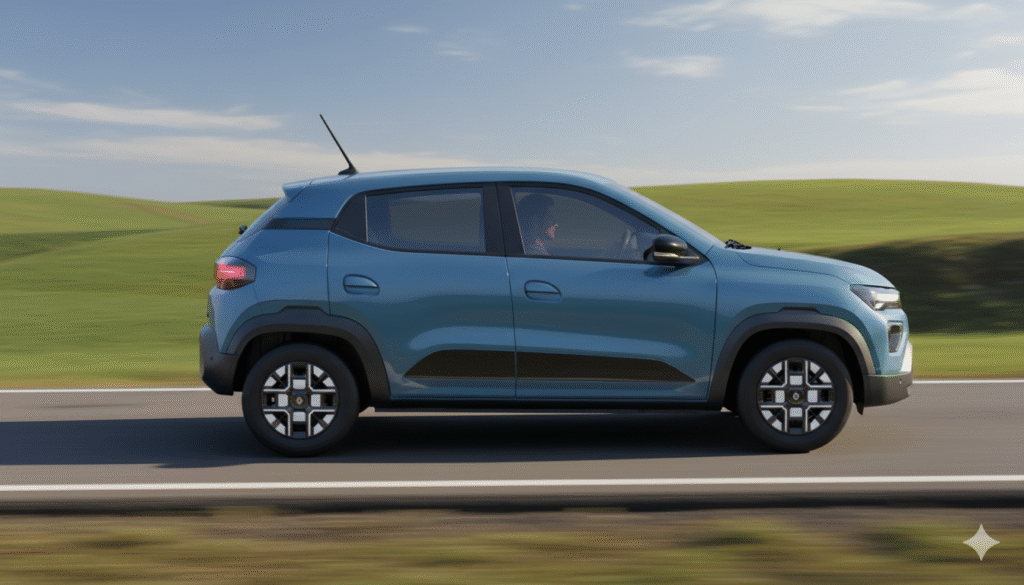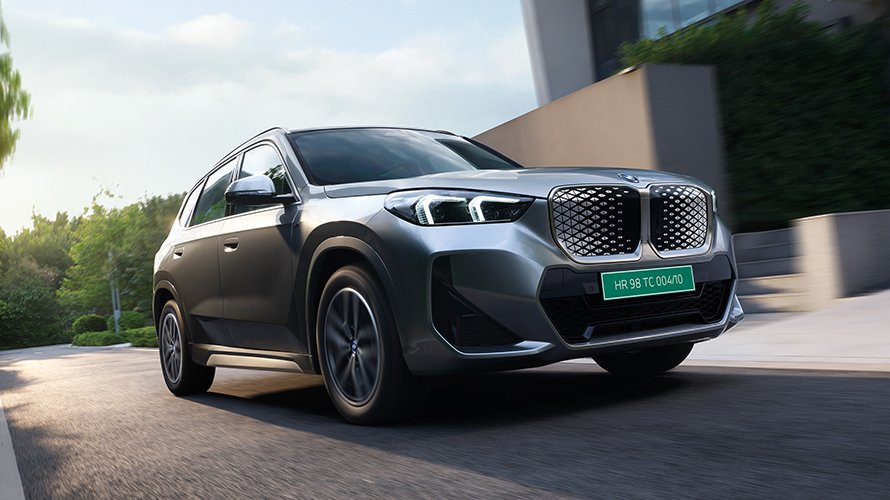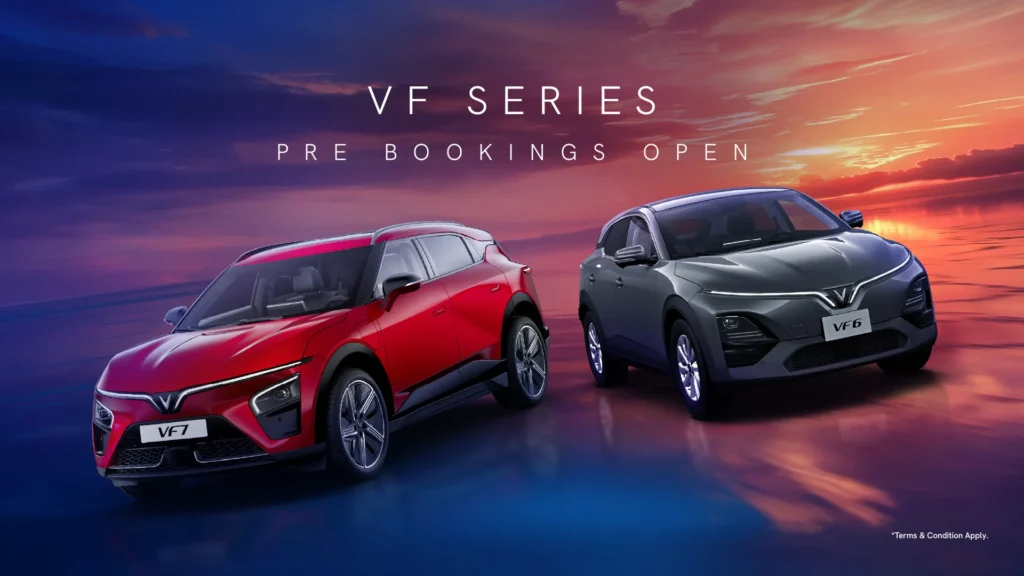In the bustling streets of São Paulo and Rio de Janeiro, where traffic snarls and urban sprawl demand nimble, eco-friendly rides, Renault has just dropped a game-changer. On October 12, 2025, the French automaker unveiled the all-new Kwid E-Tech in Brazil—a pint-sized electric hatchback that’s not just a refresh but a full evolution, badged under the Renault banner yet unmistakably rooted in its sibling brand Dacia’s Spring EV. Priced at a wallet-friendly BRL 99,990 (roughly Rs 16.5 lakh at current exchange rates), this single-variant Techno model undercuts rivals and positions itself as the cheapest EV on Brazilian soil, replacing the outgoing Kwid E-Tech that clung to the previous-generation Kwid’s bones. Amid a global push for accessible electrification, this badge-engineered marvel signals Renault’s intent to democratize EVs in emerging markets, even if it skips some of the latest tweaks seen on its Euro-spec Dacia counterpart.
Renault and Dacia, both under the Renault Group umbrella, have a storied history of sharing platforms and swapping badges to conquer diverse markets. It started with the original Kwid E-Tech in Brazil back in 2022—a mild electric offering based on the combustion Kwid’s chassis, delivering modest range and features to dip toes into EV waters. Then came the Dacia Spring EV in 2021, Europe’s bargain-basement electric star with its boxy charm and sub-€20,000 pricing, proving that green mobility didn’t need a luxury price tag. Fast-forward to 2025, and the Kwid E-Tech flips the script: for the first time, the Spring spawns a Renault variant tailored for Latin America. It’s a smart play—leveraging Dacia’s cost-cutting expertise while infusing Renault flair. Notably, though, this Brazilian iteration forgoes recent Euro updates to the Spring, like enhanced aerodynamics or battery tweaks, opting instead for region-specific optimizations that keep costs low and relevance high.
Slide behind the wheel (or rather, admire from afar first), and the new Kwid E-Tech screams evolution. Gone is the dated silhouette of yore; in its place is a bolder, sharper profile that borrows the modern, upright stance of the Dacia Spring but amps up the aggression. Measuring just under 3.7 meters long, it’s a true city sprite—perfect for weaving through Brazil’s chaotic avenues. Up front, the Renault diamond logo sits proudly above the front-mounted charging port, a nod to accessibility for quick top-ups at urban stations. The grille? A fresh design with vertical slats that add a touch of rugged intent, flanked by the carried-over Y-shaped LED daytime running lights and projector headlamps that pierce the night with efficiency. The front bumper diverges from the Spring’s smoother lines, sporting chunkier cladding and a more sculpted lower air dam for that crossover-lite vibe.
Around the sides, it’s all about practicality: 14-inch dual-tone steel wheels wrapped in eco-tyres, black wheel arch extensions for a planted stance, and those flip-up door handles that hark back to the original Kwid’s budget roots—charming in their simplicity, if a tad retro for 2025. At the rear, the Y-shaped taillights connect via a sleek new plaque that spells out “E-Tech” in subtle lettering, ditching the contrasting bumper insert found on the Dacia for a cleaner, more monolithic look. Overall, the aesthetic language feels aesthetically pleasing and purposeful—an upgrade in Kwid’s decade-long journey from plucky entry-level ICE to full-fledged EV contender. Available in shades like Noronha Green and Glacier Polar White, it turns heads without shouting, blending futuristic minimalism with everyday approachability.
Pop the (keyless) door, and the cabin punches above its weightclass. The dash adopts a clean, digital-first layout with a 7-inch customizable instrument cluster beaming vital stats like range and regen status, paired to a generous 10.1-inch floating infotainment touchscreen. Wireless Android Auto and Apple CarPlay keep you connected, while dual USB-C ports and a console-mounted e-shifter streamline the drive. Storage is thoughtful—33 liters scattered across a double glovebox, oversized door pockets, and a 290-liter boot that swallows weekend groceries with ease. Safety steals the show here: six airbags as standard, plus a Level 1 ADAS suite with 11 features including Lane Keep Assist, Automatic Emergency Braking, and Driver Fatigue Detection—rarities in this price bracket. Add ABS, ESP, hill-start assist, TPMS, and a rear camera, and it’s a fortress on four wheels, far surpassing the outgoing model’s kit.
Under the skin, the Kwid E-Tech packs a 26.8 kWh lithium-ion battery feeding a front-axle electric motor churning 65 hp (48 kW) and 113 Nm of instant torque. It’s no dragster—0-100 km/h takes a leisurely 14.6 seconds—but urban zippiness shines with a 0-50 km/h dash in 4.1 seconds, making light work of stop-start traffic. Claimed range? 180 km per Brazil’s Inmetro cycle, though real-world urban runs stretch to 240-250 km, aided by a new “B-mode” regenerative braking that recaptures energy on the fly. Charging is straightforward: under 9 hours on a household 220V socket, 3 hours via a 7 kW wallbox, or a brisk 40 minutes for 15-80% on a 30 kW DC fast-charger. At 977 kg kerb weight, it’s featherlight for efficiency, seating four comfortably (a trade-off from the five-seater ICE Kwid) with 172 mm ground clearance to tackle pothole-prone roads.
In Brazil’s nascent EV scene—where adoption lags behind Europe but incentives like tax breaks are accelerating growth—the Kwid E-Tech isn’t just a car; it’s a statement. At BRL 99,990, it undercuts pricier imports and local hybrids, targeting young urbanites and fleet operators craving zero-emission zip without breaking the bank. Whispers of an India launch swirl, with test mules spotted on home turf, potentially localized at Renault’s Chennai plant to slash that Rs 16.5 lakh tag further. As badge-engineering bridges continents, this Kwid heralds a greener horizon for Renault Group. Affordable, audacious, and unapologetically electric—the revolution starts small, but it starts now.



